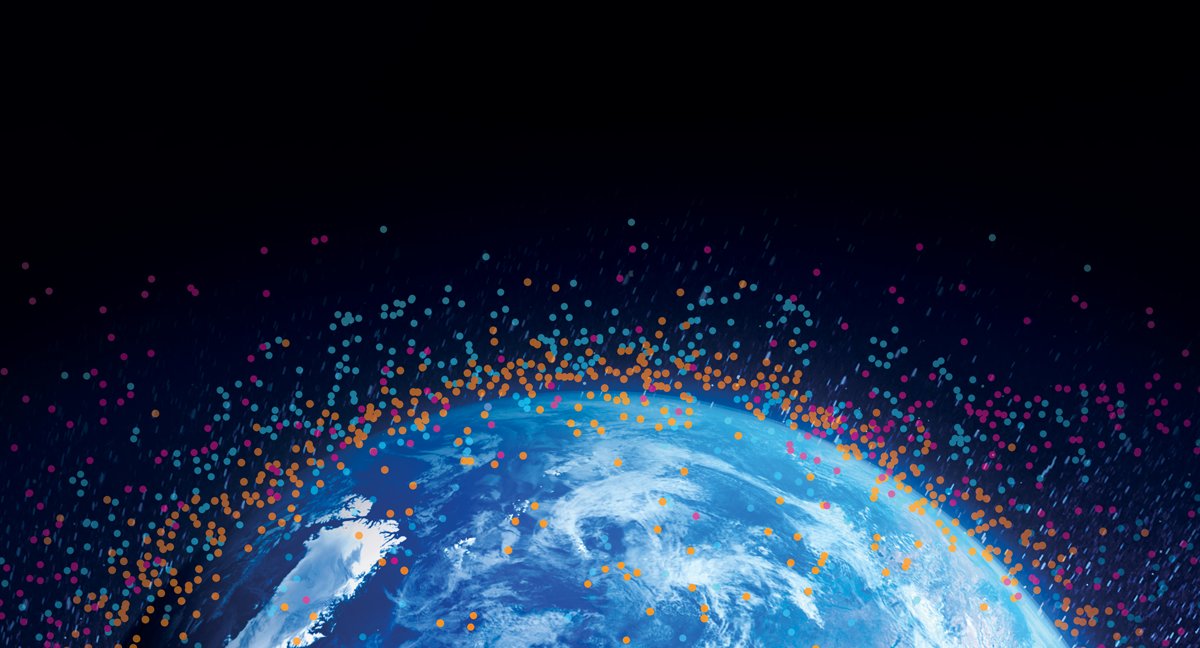Powering Discoveries
John Holden
Related Articles
Space Junky
TACC plays its part in helping clean up space, one obsolete satellite at a time

Moriba Jah isn’t your typical scientist. As the first African American to gain tenure at The University of Texas at Austin’s Department of Aerospace Engineering and Engineering Mechanics, and a core faculty member at the Oden Institute for Computational Engineering and Sciences, Jah has been defying norms and challenging the status quo his entire life.
Born in San Francisco to a Haitian mother and a father from Sierra Leone, he left the United States with his mom at age seven to start a new life in Venezuela. After completing high school there, he returned to the U.S., enlisted in the Air Force and was stationed in Montana.
A colorful career followed with academic studies at universities in Arizona and Colorado, as well as positions with NASA’s Jet Propulsion Laboratory and with the Air Force Research Laboratory in Hawaii and Albuquerque, New Mexico. Each position provided new opportunities for Jah to mingle with folks from NASA. These early interactions with the bastions of the U.S. civilian space program had a profound effect on what he is focused on now: trash.

Space trash to be exact.
As near space shifts from a playground previously open only to one or two superpowers, to a territory open to anyone who knows how to launch (or pay for) a satellite, we now have an estimated half a million anthropogenic space objects orbiting the Earth, launched by everyone from the Chinese government to the amateur astronomer who lives next door.
Currently, we can only account for approximately 26,000 of those half a million objects. This poses several challenges.
Firstly, the vast majority of satellites launched into space are designed with a “sell-by” date. When the date expires on this once heroic spacecraft, there’s no medal of bravery upon its return. It is simply left in orbit. And as thousands of satellites rendered obsolete must coexist with thousands of others still very much in use, one can see how space is becoming a crowded, dangerous place.
Given humankind cannot come to grips with the environmental disaster we have created for ourselves back down on Earth, why would anyone care about space trash?
Thankfully there are both national security and commercial interests heavily invested in greater regulation of space traffic and debris. Satellites providing data of all kinds to government, military, and private enterprises have begun to recognize the potential ramifications, should their expensive equipment collide with other untracked satellites.
Raising awareness for objects we’re unaware of in space isn’t an easy sell.
While there are others campaigning to regulate the untethered growth of space commerce, Jah remains one of the very few advocating, not just for the economic imperative of space traffic regulation, but also the long-term environmental impacts. The increasing amount of crowdsourced data collected by ASTRIAGraph – the very first knowledge graph for space traffic monitoring co-developed by Jah – is clear evidence that many more are beginning to listen.
“The enthusiasm of so many around the world who volunteer their time and energy tracking space to help make ASTRIAGraph an authentic crowdsourced initiative truly energizes me,” Jah said. “But crowdsourced data collection alone isn’t enough to be confident that the information we aim to provide is reliable.”
That’s where TACC comes in.
“This is a multilayered challenge,” Jah said. “Not only do we have potentially half a million untracked anthropogenic space objects floating around, their behavior is subject to complex dynamics – such as the Earth’s gravitational pull, the Sun behaving in different ways, magnetic forces in space, etc.”
“We now have an estimated half a million anthropogenic space objects orbiting the Earth, launched by everyone from the Chinese government to the amateur astronomer who lives next door. Currently we can only account for approximately 26,000 of them.”
Researchers cannot assume one single flight path for an object. Because of the aforementioned variables in space, the information about an anthropogenic space object is inexact and thus needs to be modeled as a “bundle” of orbits. Evaluating bundles of orbits for hundreds of thousands of objects is made significantly easier when you have access to the world’s leading academic supercomputing facility.
Several times a day ASTRIAGraph, housed on TACC’s Corral system, receives information from a variety of sources.
“Most anthropogenic space objects are not self-reporting so we must come up with ways to ‘fingerprint’ these objects,” Jah said. “This is computationally intensive data collection work done remotely by radars and telescopes worldwide.”
TACC enables the capture and analysis of this information, which provides insights into the size, shape, and even materials an anthropogenic space object is made out of.
While some other current actors in space would prefer to monetize the provision of data on locations of all satellites in orbit around Earth, Jah remains committed to the crowdsourced, open-source approach. ASTRIAGraph is now offered as a ‘virtual machine’ that can be provided off-site.
“The United Arab Emirates and Australia are using it for their own space traffic purposes. Countries around the world are seeing what ASTRIAGraph, powered by TACC, has enabled,” Jah said. “Naturally they want to be able to do the same, and I’m more than happy to facilitate anyone wishing to promote more responsible and accountable behavior in space.”

